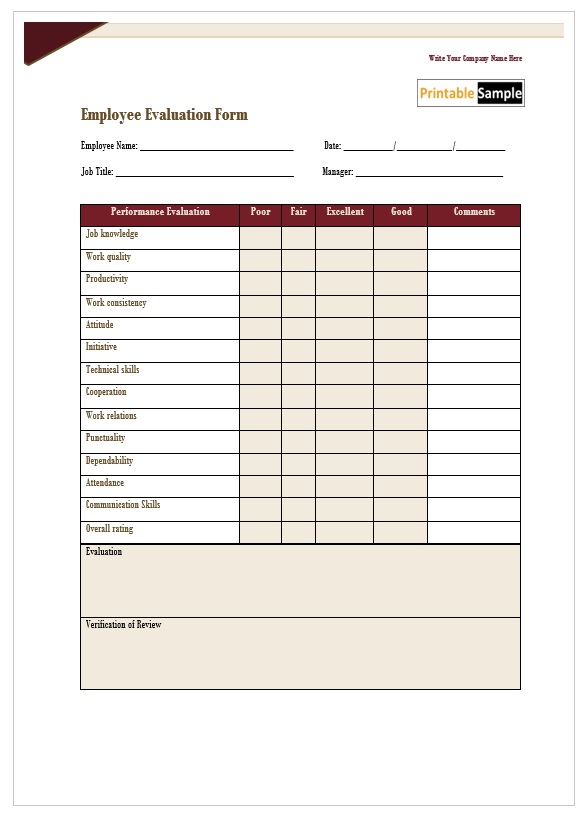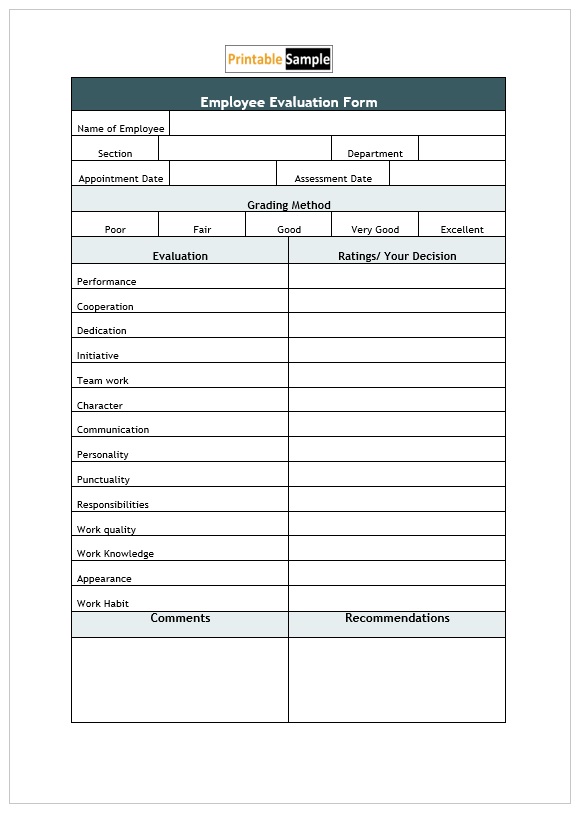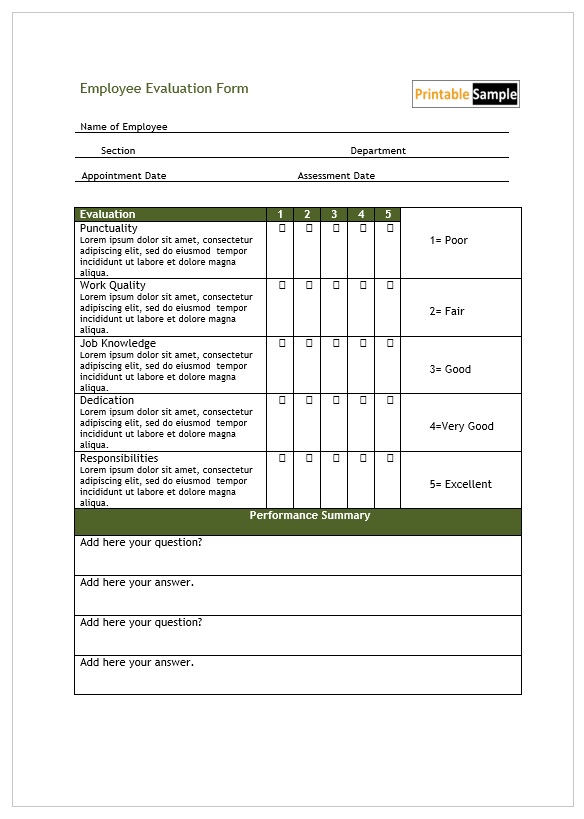Download these 38 Free Teacher Evaluation Forms in MS Word Format to help you prepare your Teacher Evaluation Form easily.
Being a student, you would think that you are the only ones who take exams and the one whose performance and learning capabilities are evaluated on a regular basis. This is true to some extent because if the teachers don’t evaluate their students, how would they know if the students are learning properly or if they need extra focus? Now returning to the question at hand students aren’t the only ones who are evaluated but teachers and their performance are also evaluated by the educational institute. If the teachers are teaching in a school, the principal evaluates their performance while in colleges and universities; there is an evaluation committee that evaluates each professor and teacher in the institute. This evaluation is typically done on a document known as a teacher evaluation form. In this form, there are various elements and factors against which the capabilities of teachers are weighed and then certain points are given for each factor. In the end, all points are summed up and we get the overall average score or evaluation value of the teacher.
Contents
Importance and uses of Teacher Evaluation Form:
As the name suggests, the teacher evaluation form is typically used for evaluating teachers. In schools, colleges, and other educational institutes, the administration and top management need to undergo periodic evaluations of the staff members so the services provided to the students are of the highest level. It’s possible that when a teacher gets comfortable or teaches a subject for too long, they lose their concentration which results in not delivering full knowledge to the students in the classroom. To ensure that the students are still getting the best teaching and the teacher is leading the students in the right direction, the teachers are evaluated usually every 3-4 months or at least twice every year.
In the same manner, the teachers who are teaching in other facilities i.e. private coaching centers, tuition centers, or provide tutor services at home, these individuals are also evaluated periodically. Most of the time, the evaluation is done without giving any prior notice and it’s kind of a surprise for the teacher and its standard procedure across the world. There are some cases where there is a complaint about the teacher regarding his behavior, his teaching method, or his capability over the subject and then the evaluation is done even if wasn’t scheduled.
Key Components of an Effective Teacher Evaluation Form
An ideal teacher evaluation form acts as an organized document that serves as a guide for checking teaching performances, enhancing uniformity and fairness in the process of evaluation. The design of the form should be such that it captures various dimensions of teaching and permits a certain degree of both objective scoring and qualitative feedback for it to be of great utility.
Essential Elements to Include
At its core, any teacher evaluation form is primarily based on the definition of performance areas that capture various aspects of effective teaching. This usually includes instructional strategies, such as presenting material clearly and differentiating instruction to meet the needs of students. Classroom management is another important area; that is an assessment of how well a teacher upholds discipline, nurtures a good learning environment, and responds to disruptions. Student Engagement should also be measured, emphasizing how actively students participate and the degree of motivation felt by students in the learning process. Evaluators also look at subject matter mastery by the teacher, their accurate and confident delivery of lessons, and integration of real-world examples. Last but not least are professional responsibilities like punctuality, working with colleagues, communicating with parents, and adherence to school policies.
The Importance of Clear Rating Scales and Open-Ended Feedback Sections
An evaluation can only be useful and fair when forms have a well-defined rating scale that standardizes the scoring practice of all evaluators. In addition to numerical ratings, the scale may include descriptive rubrics that suggest performance expectations. Open-ended sections invite the evaluator to offer specific information and comments, praise, or recommendations. Such a data set combines the quantitative and the qualitative, rendering evaluations more balanced, informed, and action-oriented for account.
Free Teacher Evaluation Forms Templates
Here are previews and download links for these Free Teacher Evaluation Form Templates in MS Word Format,
Types of Teacher Evaluation Forms
Depending on who conducts the evaluation, why the assessment is being done, and the context in which it is applied, evaluation forms for teachers can take on various formats. Each format offers its own perspective on teaching effectiveness, and when considered together, they provide a more holistic view of a teacher’s impact in the classroom.
Administrator Evaluations Focusing on Performance Metrics and Professional Standards
The most formal type of evaluation, primarily conducted by the principal, department heads, or any other school leader, entails administrator-led evaluations. This administrator evaluation often relies on predetermined forms in consideration of institutional teaching standards and is intended to evaluate the degree to which a teacher’s practice conforms to school-wide expectations. General areas of focus include the delivery of instruction, management of the classroom, implementation of curriculum, and professionalism. This evaluation is essential, particularly with regard to formal reviews such as contract renewal and promotion.
Peer evaluation serves a collegial purpose in teacher assessment. In this environment, teachers watch one another’s classes and provide feedback based on shared experiences and pedagogical insight. While these evaluations deviate from formal ratings and allude more to professional development, they help create an environment of collaboration among educators, where they learn from one another. Peer reviews can serve as strong mechanisms to enable innovation and reflective practice among educators.
Student Evaluations Providing Insights into the Learning Experience and Teacher Effectiveness
Student assessments offer the learner’s perspective and may provide some insights into the reception of a teacher’s methods. Oftentimes informal, these evaluations do provide some feedback about participation, communication, and climate of the classroom. If carefully designed and used alongside other evaluative instruments, evaluations from students help to fill in the blanks in a teacher’s effectiveness and impact in the classroom.
Besides, every educational institute wants its teachers and students to excel in all aspects of life and this means observing the teachers while they teach in the classroom to find out if they need motivation, counseling, or grooming by learning about new techniques and getting updated knowledge from around the world. While a teacher teaches in the same classroom and talks about the same topic over and over, it’s possible that they are overwhelmed or to put in simple words; they get bored. This is never the ideal situation where a teacher or professor does not feel the same passion for his subject as he used to. This is where the teacher evaluation form comes in handy as it can evaluate the level of motivation, dedication, and delivery capabilities of the teachers and if there is anything not right, the administration can take quick action to correct the situation.
How to Evaluate Teacher Performance Using QSWR Guidelines
Teachers are judged on their performance according to several different standards. Typically, they are evaluated on how well they help students achieve their individual goals. This is accomplished through test scores, which show student performance at a particular time. However, some states also use student growth as a measure of teacher quality. If this is the case in your school, consider incorporating student growth into your teacher evaluation guidelines. But be sure to read the guidelines carefully!
A student’s performance is evaluated based on several factors, including how the work relates to the student’s learning goal. The teacher will collect five or more pieces of student work to assess. The work samples should illustrate the student’s growth in independence, while the teacher will evaluate the work against descriptors for five QSWR elements. Ideally, the collected work samples will include a range of student abilities.
While teacher performance is assessed based on a combination of student growth and development data, several variables can influence the quality of evaluation. Teacher quality ratings vary widely among schools and districts, as UConn researchers found in a recent report. In one school district, 76 percent of teachers were rated as exemplary and the rest as proficient. Only a small percentage were classified as developing, according to the Capitol Region Education Council.
Using a QSWR in educational contexts is a powerful way to improve teaching. Teachers can use these guidelines to describe their expectations of student performance at each grade level. Students can use this information to plan their projects accordingly. This helps students understand the importance of producing quality work. They can also use the guidelines to improve themselves as well. These guidelines can also improve school culture. And it will help teachers achieve their goals more effectively. So let’s see how these guidelines can help.
A comprehensive range of information should be provided. A dialogue with stakeholders will clarify the purpose of the assessment reform, identify actual information needs, and enhance stakeholder ownership. Identifying the connection between outcome statements and assessment tasks can be challenging. However, Brindley suggests several measures to ensure the quality of the assessment process. Some of these include research of correlations between outcome statements and assessment tasks, preparing teachers to handle the new assessments, creating a bank of assessment tasks, and ongoing open-ended review of the process.
The book also features examples of evaluations from a variety of contexts. English as a second/foreign language, college-level English for specific purposes, Gaelic-English bilingual education, German, and more. It also has an appendix that provides the details of the project, instruments used, and results. If you are considering starting an evaluation project, these guidelines should help you get started! They are also highly practical for potential evaluators.
When preparing a QSWR, remember to use a clean copy for each assignment. Then, review student work with each element. You should circle the descriptor that matches the work. If the work contains awkward phrasing or inappropriate vocabulary, it hinders the understanding of the student. If the student has trouble understanding the meaning of the words “freedom” and “revolutionary war,” the teacher can mark that as an area for improvement.





































